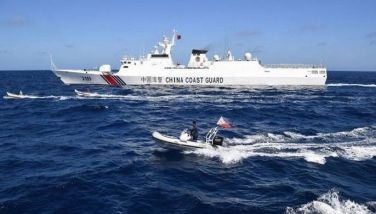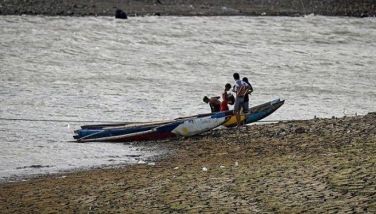Benham Rise: Philippines's ‘new territory’
LOS BAÑOS, Laguna, Philippines – The Philippines has gained a “new territory” through the United Nations Convention on the Law of the Sea (UNCLOS)’s ruling on the 13 million-hectare Benham Rise.
Situated about 250 kilometers east of Dinapigue, Isabela, the region also known as Benham Plateau has untapped natural resources and is said to be wider than Luzon, Samar and Leyte combined.
Until 2012, this seismically active underwater region and extinct volcanic ridge had not been included as part of the archipelago, despite the Philippines being the only country within 200 nautical miles of the plateau.
Historical data sourced from Wikipedia show that the plateau is named after American admiral and geologist Andrew Benham. It was first mapped in 1933, long before it was to be acknowledged as part of the Philippine continental shelf.
Eventually, on April 8, 2001, in compliance with the requirements of UNCLOS, the Philippines lodged a partial territorial claim on the vast, largely unexplored territory with the UN Commission on the Limits of the Continental Shelf (UNCLCS).
In April 2009, the Philippines went further by lodging a full territorial claim that Benham Rise was part of its continental shelf and territory.
The Philippine claim was embodied in Republic Act No. 9522 or the Archipelagic Baselines Law.
The UN, through UNCLOS, finally recognized and officially approved the Philippine claim on the territory on April 12, 2012.
The awarding of Benham Rise to the Philippines brought to 43 million hectares the total land area of the country – from 30 million hectares.
Benham Rise has been part of ancient Filipino culture. Ancient Catanduanes (Bicol region, to Benham’s south) people fished and roamed the area long before colonial times, Wikipedia noted.
In recent years, several scientific surveys have been conducted on Benham Rise.
The Philippine government has also been exploring the possibility of mapping new gas fields on the ridge.
Aside from the expansion of territory, the Philippines will also benefit from mineral and gas deposits in the region.
Initial research findings have shown that there are massive mineral and gas deposits in the plateau. Furthermore, solidified methane was found during mapping operations. Hence, the region is believed to have vast oil deposits.
Sen. Juan Edgardo Angara has said the underwater region in the Philippine Sea “is a good alternative for the Malampaya gas fields.”
Two years ago, a government-funded exploration and survey were conducted at Benham Bank, the plateau’s shallowest part about 50 meters deep, on the research vessel of the Department of Agriculture-Bureau of Fisheries and Aquatic Resources (DA-BFAR).
The program, billed “Exploration, Mapping and Assessment of Deep Water Areas,” was funded by the Los Baños-based Department of Science and Technology-Philippine Council for Agriculture, Aquatic and Natural Resources Research and Development (DOST-PCAARRD). It was headed by Cesar Villanoy with Carlos Primo David and Hildie Maria Nacorda as project leaders.
The program is being implemented by the University of the Philippines Diliman-Marine Science Institute, UPD-National Institute of Geological Sciences and UPLB-School of Environmental Science and Management.
A collaboration among UP Diliman, UPLB and DA-BFAR, the program was backstopped by scientists, researchers and seasoned dive specialists from UP Mindanao, UP Baguio, Xavier University and Ateneo de Manila University and from the local diving industry.
The pioneering research project initiated the assessment of the benthic marine biological features and resources of the Benham Bank seamount, contributing to efforts to document deep-water biodiversity in the Philippines.
“Knowledge about these features and resources may also be linked to the productivity of the Benham Rise region, where fishing activities have been known to occur even before the country was awarded the claim,” Villanoy and Ma. Adela Corpuz said in a joint report.
Results of the survey, they added, include identification of four species of Halimeda and 15 genera of associated epiphytic algae and corals.
“These data and other related scientific information will input to the knowledge/status of the Philippine deep sea biodiversity, resource planning and management,” Villanoy and Corpuz said.
The exploration of Benham Rise is one of the many researches and development institutions on aquatic concerns supported by DOST-PCAARRD.
- Latest
- Trending






























